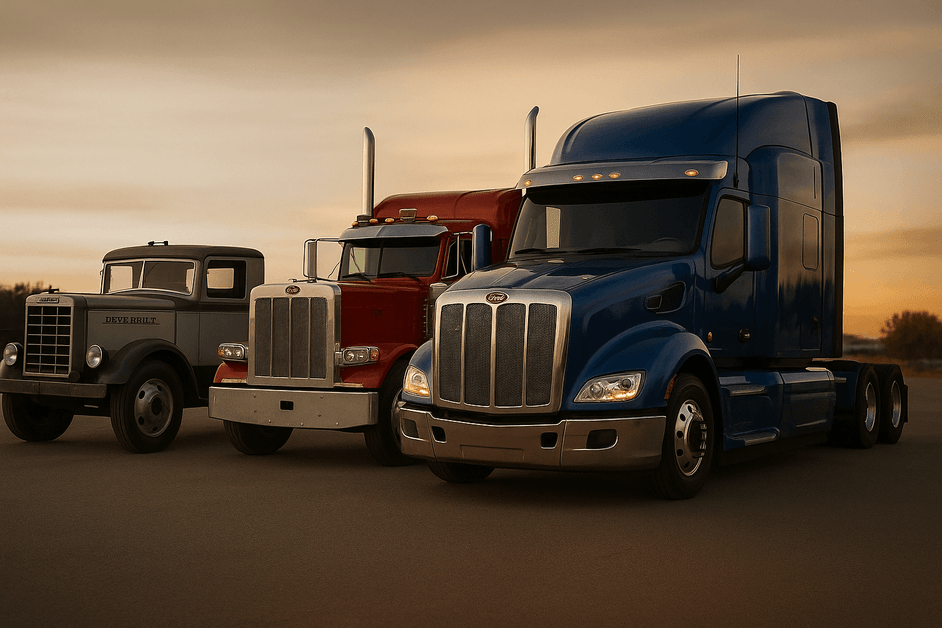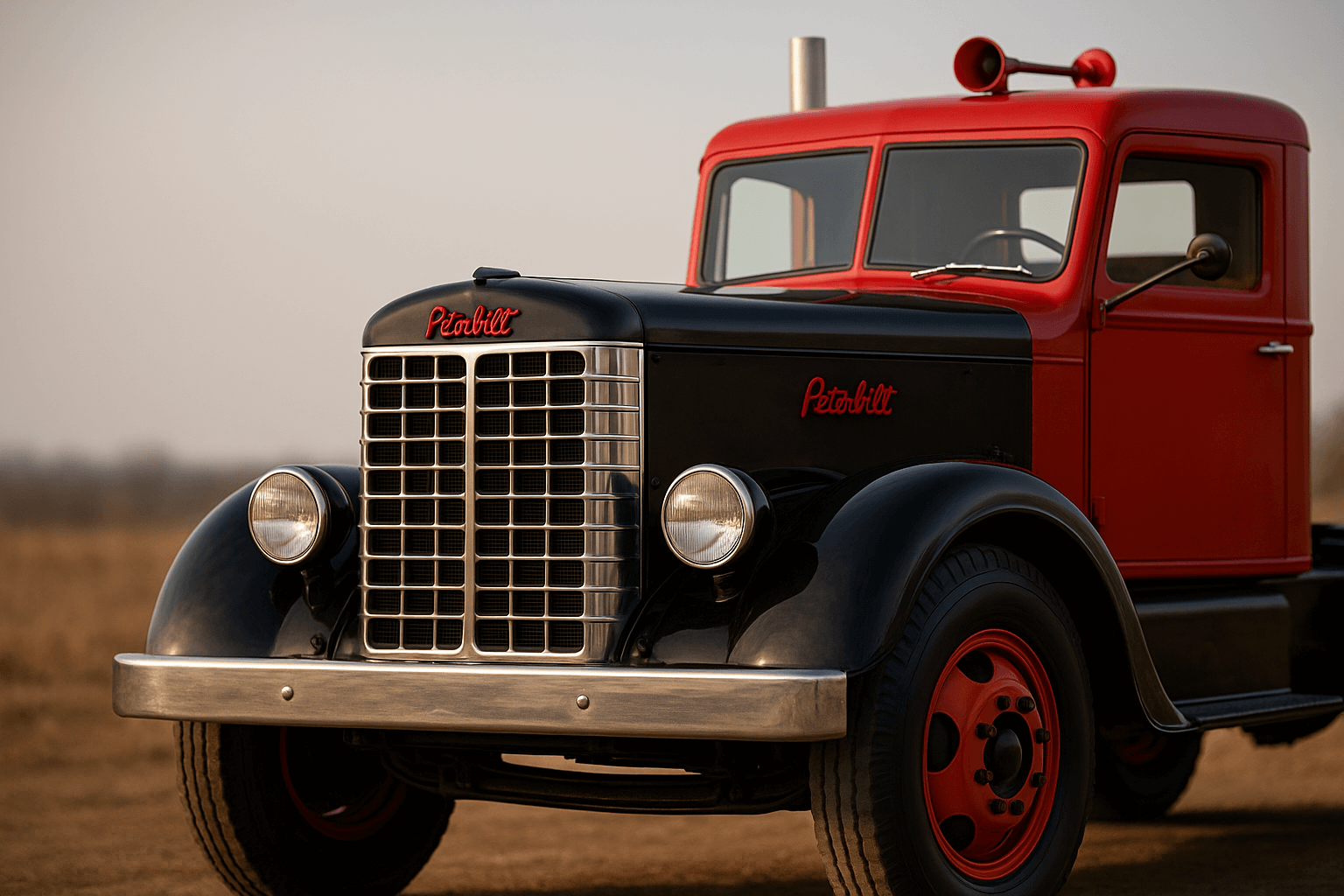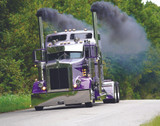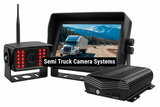The 85-Year History of Peterbilt Trucks (Quickly Summarized)
Peterbilt: A Legendary Name in American Trucking
A fast, engaging history—from WWII logging ingenuity to today’s electric rigs.
As far as top-tier commercial trucking companies go, Peterbilt remains a legendary name in the trucking industry.
Here’s the quick version of how the Peterbilt brand got its start.
The Founding of Peterbilt: WWII, Logging Woes & Buying a Bankrupt Firm
Trapped in the tense atmosphere of a world war, with Americans crawling out of the economic wasteland characterized by the Great Depression, Theodore Alfred Peterman chose to start a trucking company in Tacoma, Washington.
As an experienced logger, he was tired and frustrated with the clunky truck designs that gave so many issues on the road.
So, he picked up the hobby of taking used military trucks and rebuilding them to haul lumber.
Peterman’s goal was to craft a more durable work truck that could haul heavy payloads and the sharp, difficult roads of the rural Pacific Northwest.
When the small truck maker Fageol Motors went bankrupt, Peterman bought it and renamed the company.
Peterman had his engineers talk to real truckers, note their complaints, and design new trucks to better meet their expectations.
The Peterbilt Timeline: Brand History & Evolution
1940–1945
The first Peterbilt trucks were the Model 260 and 334, featuring all-steel cabs. The 260 was a chain-drive single-drive axle, and the 334 was a dual-drive.
These early models are considered antique Peterbilts; collectors still refurbish them. The military adopted the trucks for supply delivery. Material shortages spurred innovation into lightweight aluminum cabs. In 1944, Peterman died; his wife later sold the company to a group of business managers.
1953–1959
The iconic red-oval Peterbilt emblem debuted in 1953.
The Model 351 arrived in 1954 and ran for over two decades. In 1958, PACCAR (formerly Pacific Car & Foundry) acquired Peterbilt.
1960–1969
The Model 352 introduced an aluminum UniLite cab tilting 90° for easier maintenance. The Model 358 debuted the first bird-style hood ornament. Lightweight, service-friendly designs earned loyal drivers.
1967
The Model 359 debuted—longer, lower, more powerful. A highway command presence.
1970–1979
Rapid expansion. The 1100-Series cab (1972) dramatically improved comfort amid a nationwide driver shortage. In 1975, Peterbilt opened a manufacturing plant in Sainte-Thérèse, Quebec. Trucker culture boomed—Smokey and the Bandit and Convoy elevated the Peterbilt into a pop-culture icon.
1980
A new facility opened in Denton, Texas—setting the stage for future growth.
1986–1987
The Model 362 COE improved aerodynamics, while the Model 379—with its square nose, wide view, aluminum hood, and Unibilt sleeper—redefined the brand. It remains a show-truck favorite.
1990–1999
Refinement continued. The smaller Model 385 and wide-body 387 emphasized fuel efficiency and driver comfort. Curvier, smoother fronts improved airflow amid rising fuel costs and strict Federally-led emissions rules.
1998: PACCAR acquired DAF, expanding reach into medium-duty markets.
2000–2009
The Model 330 led Peterbilt’s medium-duty conventionals. The Model 386 (2005) became the brand’s first EPA-recognized aerodynamic truck. Urban delivery entries 210/220 followed. By 2007, the 379 ended production, succeeded by the 389—sleeker headlights, advanced dashboards, and better aero.
2010–2015
- 2010: Model 587 — smooth, integrated sleeper cab.
- 2012: Model 579 — fuel-efficient flagship with driver-centric ergonomics.
- 2013: Model 567 — vocational powerhouse with improved visibility & strength.
- 2014: Model 579 integrates EPIQ technology for dramatic fuel-economy gains.
- 2015: PACCAR MX-11 engine launched (430 hp / 1,650 lb-ft).
2016–2018
The Model 567 kept the classic long-nose silhouette with modern aero updates. In 2017, PACCAR’s 12-speed automated transmission improved shifting and efficiency. In 2018, the 579 UltraLoft redefined sleeper comfort.
2019–2023
- 2021: Production began on 579EV (Class 8, ~150-mile range), 520EV (refuse), and 220EV (urban delivery).
- 2021–2022: Medium-duty line 535–548 launched.
- 2023: Model 589 debuted, replacing the 389 with a longer hood, improved aero, and an upgraded cab.
The Emissions Evolution vs Competitors
2000s & 2010s: The Aerodynamic Arms Race
Federal emissions pressure accelerated fuel-efficient design. Despite evolving engines and aero, Peterbilt preserved its classic long-nose look.
- Peterbilt 386 (2005): a milestone in aerodynamic MPG gains.
- Model 579 (2012): on-highway flagship—clean exterior, upgraded cabin, and aero focus.
- Smoother hood & bumper profiles
- Tighter wheel-well closures
- Extended side fairings
- Redesigned low-drag mirrors
- Trailer-gap seals
Next-gen aero shell, underbody smoothing, driver-assist tech (predictive cruise, digital dashboards). While Peterbilt and Kenworth share PACCAR power, Kenworth emphasized TX-series AMTs for torque mapping; Peterbilt focused on driver-first interiors and sleeper comfort.
S13 integrated powertrain (engine + T14 AMT + axle) calibrated as a unit—targeting ~5% better fuel economy against aero competitors.
2020s: Zero-Emission Push
Peterbilt’s battery-electric rigs offer ~100–200-mile ranges with DC fast charging—comparable to eCascadia’s efficiency class. Current line: 579EV, 520EV, 220EV.
The Cultural History of Peterbilt: Movies, TV, Radio
Peterbilt trucks have shaped the culture of trucking since 70s, being featured in Hollywood movies and popular TV shows for decades:

- Steven Spielberg's Duel featured a gritty-looking Peterbilt 281 (1955).
- Smokey and the Bandit II included a Peterbilt 359 with a chromed-out long hood.
- Transformers (Optimus Prime) featured the Peterbilt 379 (1994 model).
The decades-long cultural adoption of these models has definately shaped public perception. Peterbilts are to truckers what Gibson Les Pauls are for serious guitarists.
Recent Posts
-
The Ultimate Guide to Custom Semi Truck Upholstery (Everything You Need to Know)
Almost any custom show truck prioritizes quality interior upholstery material and stitch design, be …16th Dec 2025 -
What Does the FASS Fuel System Do?
Want to protect and clean your diesel fuel system in one go? The FASS (fuel air separation system) i …12th Dec 2025 -
Semi Truck Muffler Guide
Need to lower your exhaust and engine noise, but aren’t sure what muffler to get? We offer Pittsburg …5th Dec 2025 -
Custom Underglow Light Setups on Semi Trucks
If you're looking for a way to dramatically enhance the look and presence of your semi truck at nigh …28th Nov 2025 -
Common Myths and Mistakes When Buying Aftermarket Semi Truck Parts (Ultimate Guide)
Cost, convenience, and make/model fitment are the top priorities when it comes to buying aftermarket …18th Nov 2025 -
Haul of Fame: Tony's Custom Retro W900 Kenworth
Tony Huttenstine is a seasoned owner-operator. Over the years, he has poured enormous time, money, a …14th Nov 2025 -
The 13 Best Christmas Gift Ideas for Truckers
Some of the best gifts for truck drivers are accessories that help make their job easier. Truckers s …11th Nov 2025 -
Best Semi Truck Camera Systems (Buyer's Guide)
Backup cameras can be a downright lifesaving accessory for truck drivers. But with countless commerc …7th Nov 2025 -
The Best Steering Wheel Spinner Knobs for 2025
It's a small, affordable accessory that drivers love. Yup. We're talking about semi truck spinner kn …24th Oct 2025
















